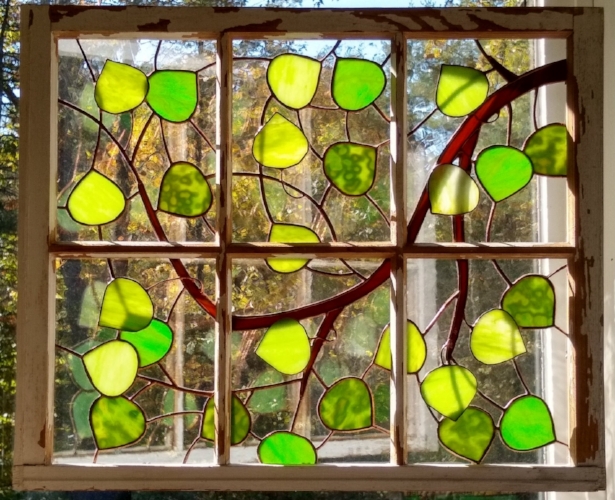Our Glass Art
We take great pride and care in the creation of our quality glass art pieces. We take the time to create unique and customized designs, we work with high quality art glass, and we make the effort to use found, reclaimed and recycled materials when feasible.
Most folks are familiar with stained glass, so we will start there.
Stained Glass
Stained glass is easily identified by beautiful pieces of glass separated by distinct ‘lead lines’. Traditionally, it is created by connecting the individual glass pieces with flexible lead strips called ‘came’, which create the lead line look.
In the late 1800’s, Louis Comfort Tiffany, yes the Tiffany lamp Tiffany, invented a different way to create stained glass that allowed him to create more intricate pieces. His ‘copper foil’ method gained wide popularity and is commonly used today by many, including us. Tiffany’s technique, instead of using lead came, wraps the edges of each piece of glass with a sticky copper foil. The foiled pieces are then connected together using solder. The solder that is commonly used contains lead, however a lead-free solder is available (important for pieces that are handled frequently or are near small children). The color of the ‘lead lines’ that are created can be left silver, or given a copper or black patina, depending upon the desired look.
Fused Glass
Fused glass differs from stained glass in many ways. The most obvious is that fused glass has no lead lines. This is because the pieces of glass are held together by… glass, using a kiln. This high temperature oven heats the glass to temperatures that allows the individual pieces of glass to melt together. By heating the kiln to different temperatures, you can achieve different glass effects. Glass pieces can be ‘tacked’, where all the pieces are stuck together but still look and feel a bit like individual pieces. Using a higher temperature, the pieces can be melted to the point where the glass looks and feels like one uniform piece. Fused glass pieces can also be placed in or over molds to ‘slump’ or ‘drape’ the glass into curves, waves, and even different shapes.



